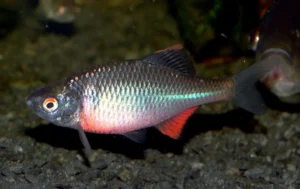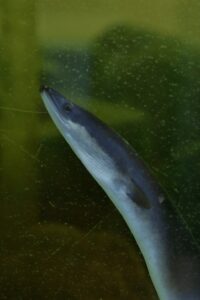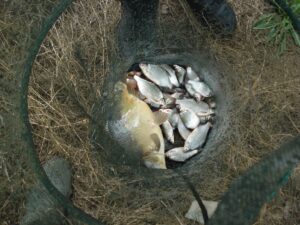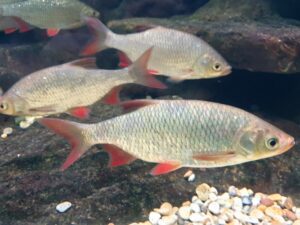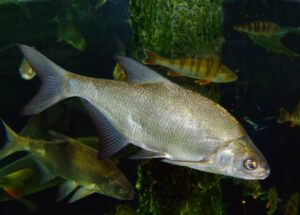Panfish: Common Bleak (Alburnus alburnus)
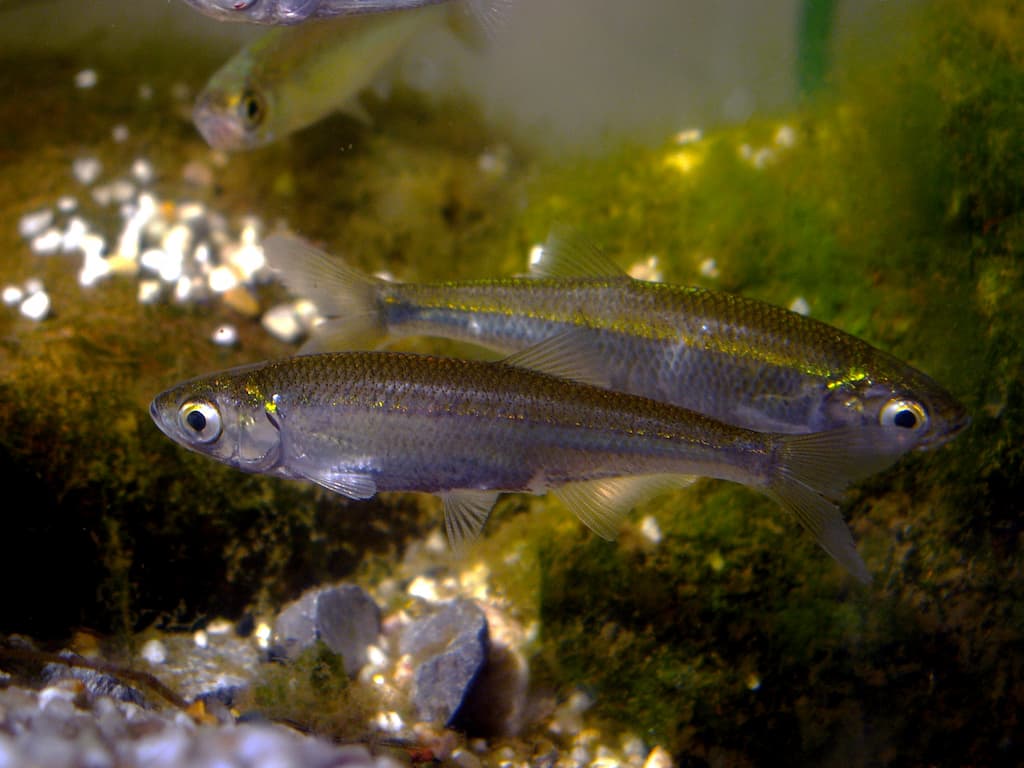
The Common Bleak (Alburnus alburnus) is a small freshwater fish forming large schools.
Also known as the Bleak, this native fish prefers clear, well-oxygenated waters. It is a cautious species, making fishing for it captivating and sometimes challenging. Often, the Common Bleak is the fish that sparks a child’s passion for angling. It is appreciated for its culinary value, especially when fried, and as live bait for predatory fish.

What is a Common Bleak (Alburnus alburnus)?
The Common Bleak (Alburnus alburnus) is a small freshwater fish from the Cyprinidae family native to Europe and Asia. It typically measures between 10 and 15 centimetres and has an elongated body slightly compressed on the sides.
Description of a Fish: Common Bleak
Identification
The Common Bleak (Alburnus alburnus) is a panfish with a spindle-shaped and laterally compressed body, contributing to its exceptional water speed. Its description begins with a small head featuring relatively large eyes.
The upper jaw is shorter than the lower jaw, directing the large mouth of the Common Bleak upwards. This characteristic indicates that the Common Bleak primarily seeks food near the water’s surface.
It is characterised by a deeply forked caudal fin and a dorsal fin located behind the pelvic fins. The fish’s colouration is silver-white with a dark, bluish-green or sometimes brownish back.
The Bleak’s fins are light grey. Its sides are covered in numerous easily detachable scales that give it a metallic appearance.
| Class |
| Actinopterygii |
| Order |
| Cypriniformes |
| Family |
| Cyprinidae |
| Genus |
| Alburnus |
| Species |
| A. alburnus |
| Binomial Name |
| Alburnus alburnus (Linnaeus, 1758) |
Size and Weight
Common Bleak usually measures between 8 and 18 centimetres (3 to 7 inches) in length and weighs between 10 and 50 grams (0.4 to 2 oz). The enormous individuals can reach up to 25 centimetres (10 inches) in length and weigh around 200 grams (7 oz). The current British record is 113 g (4 oz).
Lifespan
The Common Bleak has a long lifespan, lasting approximately 6 to 7 years.
Habitat and Lifestyle of the Common Bleak
Habitat
The Common Bleak is widely distributed in Central Europe. However, it is absent from northern regions such as Norway, Finland, and Ireland, as well as from southern areas like Portugal, Spain, and central Italy.
This fish inhabits various water bodies, including rivers and certain lakes, forming schools of varying sizes. It prefers clear, slow-moving, and non-stagnant waters. The Common Bleak is most commonly found near the water’s surface, always in motion and on the alert. Its presence in an aquatic ecosystem is considered an indicator of good water quality.
Diet
As an omnivorous fish, the Common Bleak primarily feeds on surface-dwelling insects, worms, aquatic and aerial insect larvae, molluscs, and algae.
The fish’s presence is often revealed by multiple and continuous surface feeding activities, especially during dawn and dusk, particularly in spring and summer. It is worth noting that when the water is cold, or the weather is overcast, Bleak may also feed near the bottom or at intermediate depths.
This species is voracious and highly active during sunrise and sunset, but its feeding activity persists throughout the day.
Reproduction
Common Bleak reaches sexual maturity around the age of 3. The spawning period occurs between April and June when the water temperature ranges from 14 to 15°C (around 58°F).
A female can lay between 5,000 and 7,000 eggs in multiple batches, which she deposits on submerged vegetation or shallow bottoms. During the spawning season, males develop nuptial tubercles on their backs and flanks, and their fins take on an orange hue. The incubation period lasts approximately 2 to 3 weeks.
The growth rate of the fry is relatively slow, and they primarily feed on plankton. Hybridisation can occur between Common Bleak and other cyprinids such as Chub, Roach, Eurasian Rudd, or Bream.
Importance of the Common Bleak
In the 19th century, the Common Bleak was sought after for its scales, used to create a pearly appearance on imitation pearls. These scales were utilised to produce “essence d’Orient“, a substance employed for that purpose.
The Common Bleak’s flesh is excellent, but it requires significant preparation to yield sufficient fish. A serving of fried Common Bleak, known as panfish in culinary terms, is always appreciated. It should be noted that any small white fish is considered panfish.
The fish’s most significant value to anglers is its popularity among predatory fish such as Perch, Pike, and Eel. However, the Common Bleak remains a delicate and challenging bait to handle, primarily used for fishing with live bait.
Fishing Techniques for the Common Bleak
Two primary fishing techniques are commonly used for the Common Bleak. The first involves surface fishing with small insects or tiny flies, while the second is float fishing within the water column’s top 50 centimetres (20 in).
During colder, darker, or winter periods, the Common Bleak may descend closer to the bottom and be caught using a coarse fishing setup. It may “parasitise” the angler’s targeted catch.
Common name for the Common Bleak
Common Bleak is also known as European Bleak.
The most popular common names for the Bleak are Ablette (french), Ukelei or Laube (German), Alborella (Italian), Alburno (Spanish and Portuguese), Alver (Dutch) and Ukleja (Polish).
Conservation Status of the Common Bleak (Alburnus alburnus)
The Common Bleak is classified as LC (Least Concern) in the IUCN Red List. This category corresponds to a species that is widespread and abundant.

